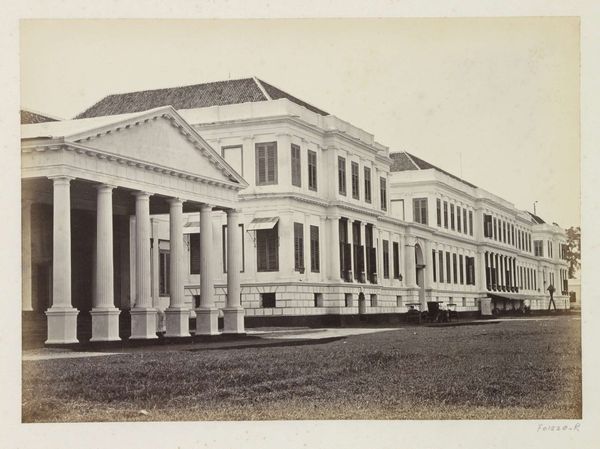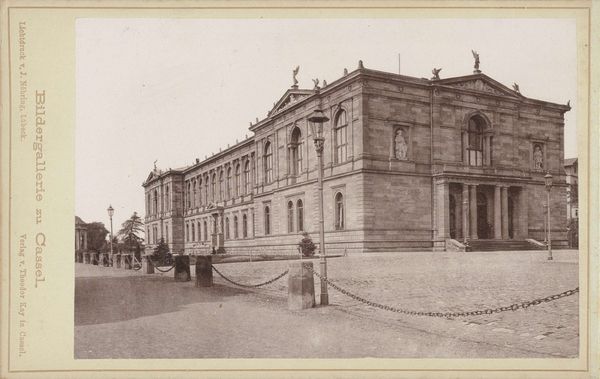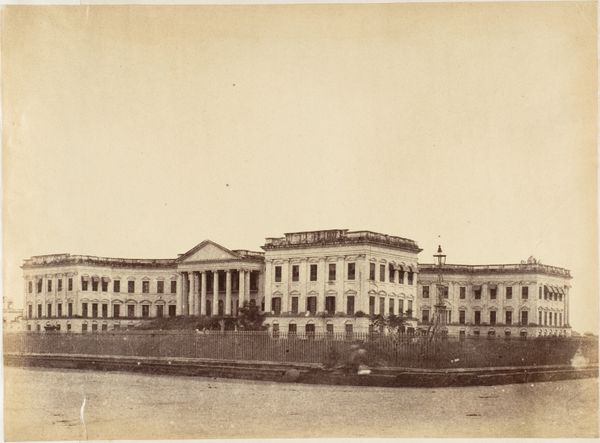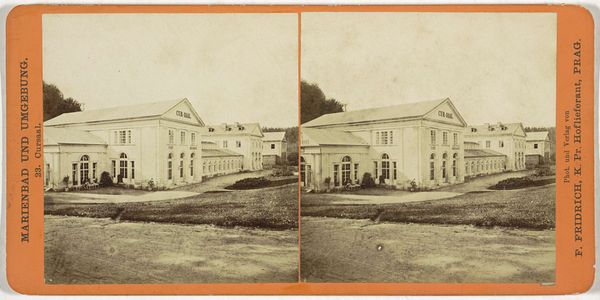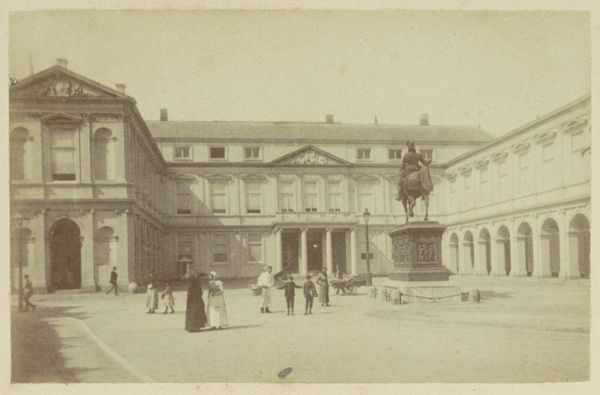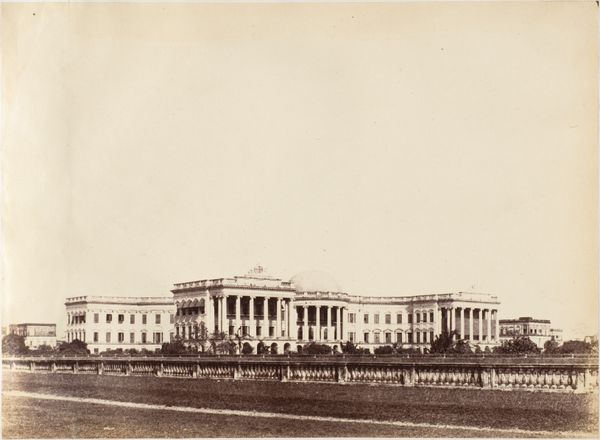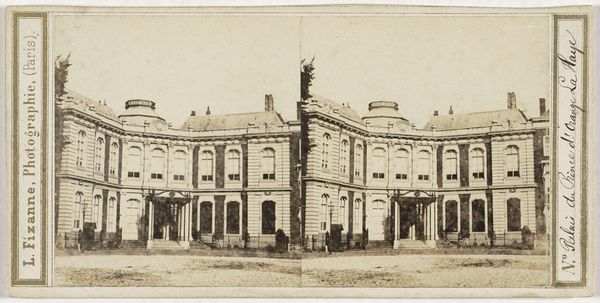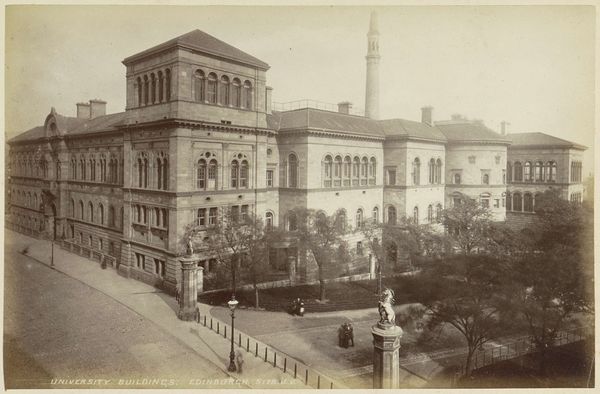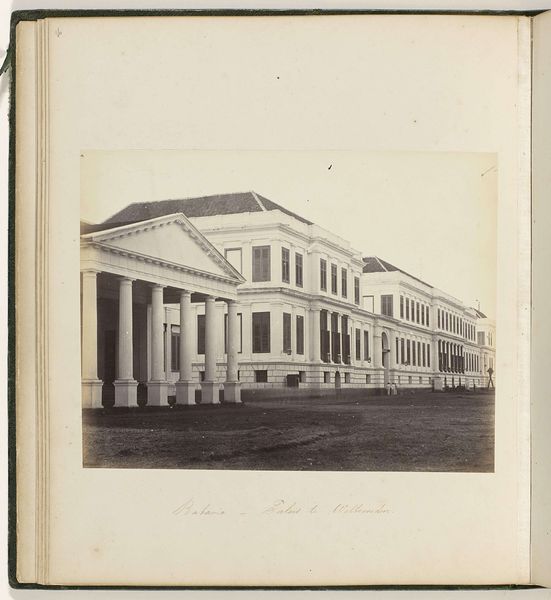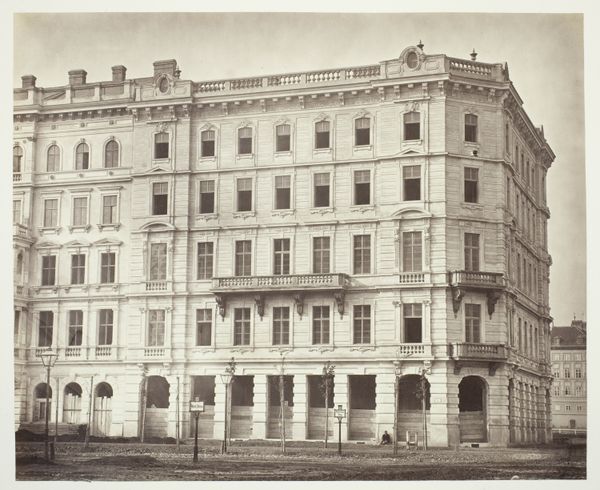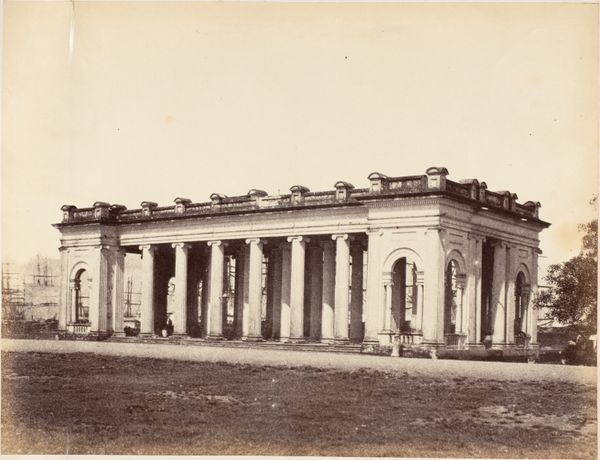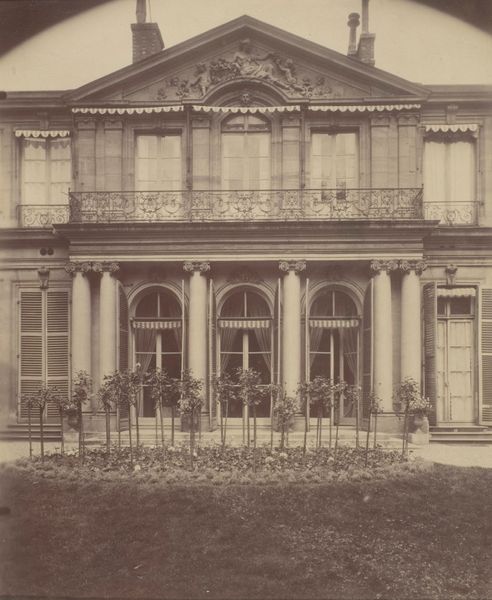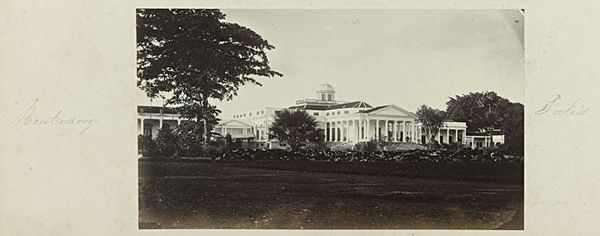
photography, architecture
#
landscape
#
photography
#
architecture
#
realism
Dimensions: height 113 mm, width 213 mm
Copyright: Rijks Museum: Open Domain
Curator: This stately image, "Gezicht op paviljoen Welgelegen in Haarlem," was captured around 1853 by Eduard Isaac Asser. It’s now part of the Rijksmuseum's collection. The use of photography really captures the architectural style. Editor: My immediate impression is one of stark formality. The monochromatic rendering amplifies the building’s imposing symmetry; you can almost feel the weight of its classical elements pressing down. Curator: Absolutely. Think about the social and political implications of presenting architecture in this manner. Welgelegen, originally a symbol of Enlightenment ideals, here becomes an exercise in asserting power and permanence through photography. The sharp lines communicate the dominance of this edifice. Editor: I agree, the meticulous details – the fluted columns, the perfectly aligned windows – speak volumes about the labour and materials that went into constructing such a grand pavilion. Photography memorialized the societal and financial resources needed. Curator: Precisely! And let's consider the symbolism inherent in neoclassical architecture. It represents a direct connection to the historical foundations of democracy. Yet, that narrative of accessible ideals clashes when it materializes through processes reliant on exclusion and wealth disparity. Editor: True. The capture and consumption of light, turned silver. You feel the labour required, and yet those labours and those laborers are missing here in this shot of pure, white, imposing light. Even in its landscape form. Curator: So, in understanding this photographic representation, we are forced to confront not just aesthetic ideals, but questions about who benefits from such displays of artistic mastery and the hidden costs. Editor: Right. This photograph leaves me thinking not only about architectural history, but the cost to construct, as well as to photograph! A very imposing construction from labor to negative! Curator: It is fascinating how one image can provoke considerations on societal power structures, historical contexts, and creative labor, all framed through the gaze of realism. Editor: Yes, truly! It leaves us considering what remains absent.
Comments
No comments
Be the first to comment and join the conversation on the ultimate creative platform.
